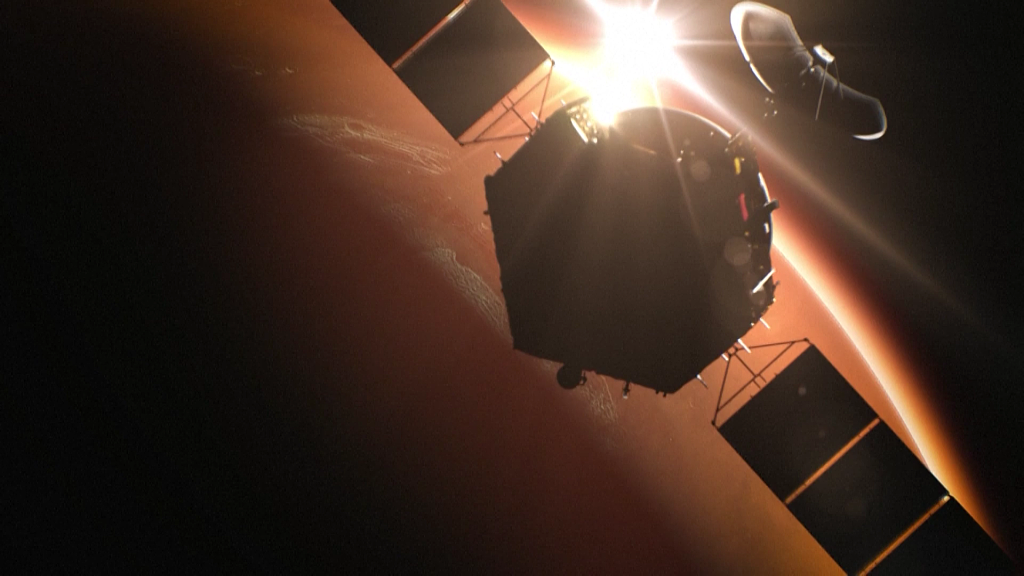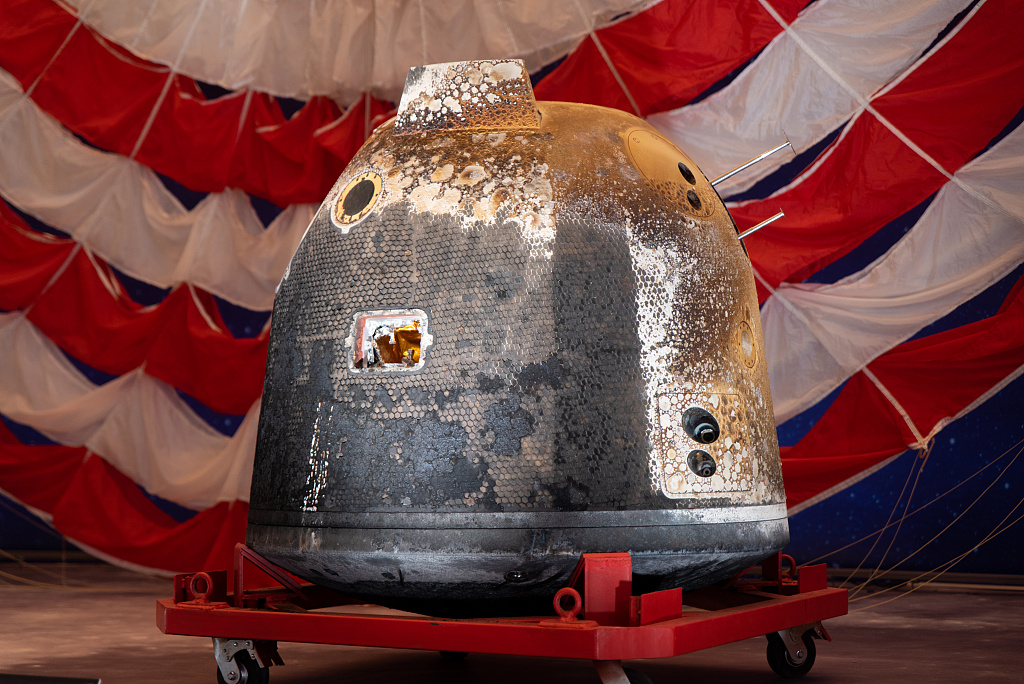
The Tianwen-1 probe recently discovered evidence that supports the theory Mars once had a vast ancient ocean./VCG
The Tianwen-1 probe recently discovered evidence that supports the theory Mars once had a vast ancient ocean./VCG
China's Mars probe Tianwen-1 team has won this year's International Astronautical Federation (IAF) World Space Award. It is the second time China has scooped this award after the scientists from Chang'e-4's lunar landing team won it in 2020.
The Mars probe was launched in July 2020, and the Zhurong rover, which is named after the god of fire in Chinese mythology, landed on the planet in May 2021. The mission was completed three months later.
1040 gigabytes of raw data were sent back to Earth some of which supports the hypothesis that an ancient ocean once existed in the Utopia Planitia, the vast Martian plain that Zhurong is exploring.
READ MORE
The race to discover the Red Planet
Lights out early for Eiffel Tower
Global leaders pay tributes to UK monarch
Scientists analyzing the data discovered the existence of hydrated minerals in the "duricrust," a hard mineral layer that typically forms due to the evaporation of groundwater.
The rover entered rehabilitation stage in May 2022 due to cold weather, and it is expected to resume work in December 2022.
The IAF World Space Award is the most prestigious award the federation hands out, and it recognizes people who has made an exceptional impact to the progress of Space exploration.

On March 28, 2021, the Chang'e 5 lunar probe returner and parachute are displayed at the National Museum in Beijing. (Photo via VCG)
On March 28, 2021, the Chang'e 5 lunar probe returner and parachute are displayed at the National Museum in Beijing. (Photo via VCG)
On a panel session held during the International Astronautical Congress, Wang Qiong from the Lunar Exploration and Space Engineering Centre introduced China's plans for the next 10 years.
Phase four of China's Lunar Exploration Program is composed of three lunar exploration missions, named Chang'e 6, 7, and 8. Step by step, the missions will take back samples from the south pole on far side of the Moon, then test the resources and environment before examining the possibility of how to utilize lunar resources. There are also plans for a Lunar Research Station and the Chang'e 8 mission is scheduled to launch around 2030.
The reconnaissance of the International Lunar Research Station is set to finish around 2025, and the construction should get underway in 2030 with the aim to be operational by 2035.
Planetary Exploration of China currently consists of four missions, Tianwen 1, 2, 3 and 4. As Tianwen -1 has achieved an orbit of Mars and landed on it, Tianwen-2 is expected to bring back samples from a Mars asteroid while Tianwen-3 could return with a sample collected from the planet surface. Tianwen-4 is set to explore the Jovian system around Jupiter.
More international cooperation expected
Wang also demonstrated China's willingness to continue to work with scientists from around the world. The Chang'e 6 mission will bring facilities from the European Space Agency, Italy, France, and Pakistan while the United Arab Emirates will supply a rover that will take back a maximum of 25 kilograms of material to Earth. Cooperation is welcomed for other explorations.

